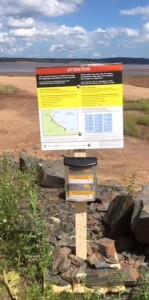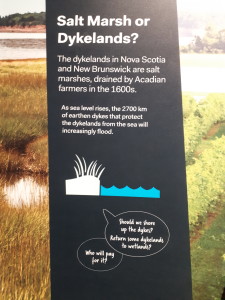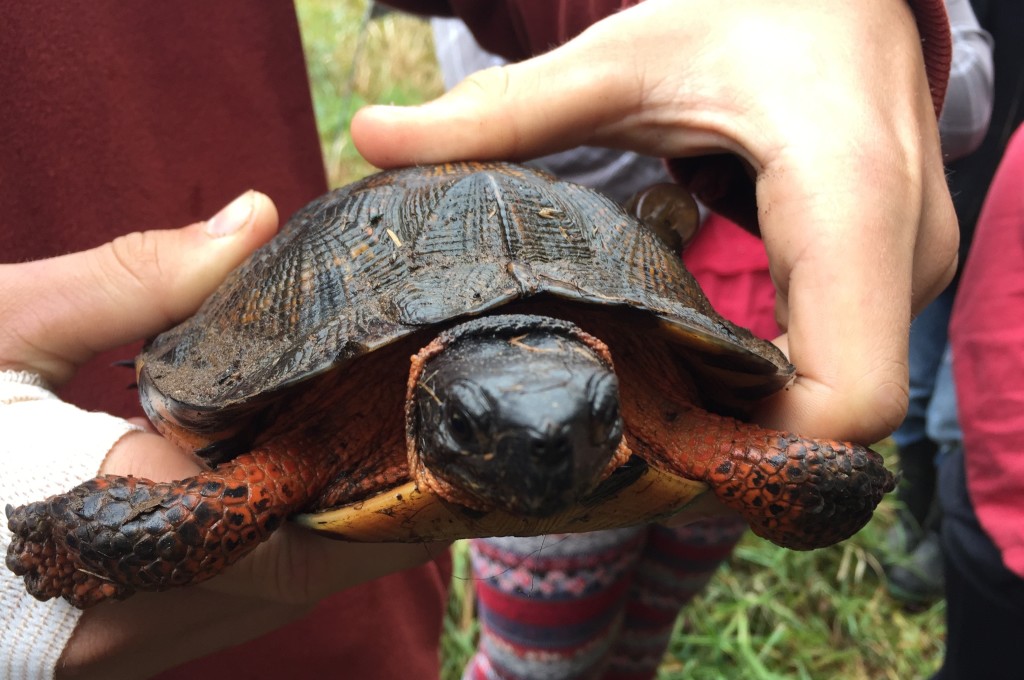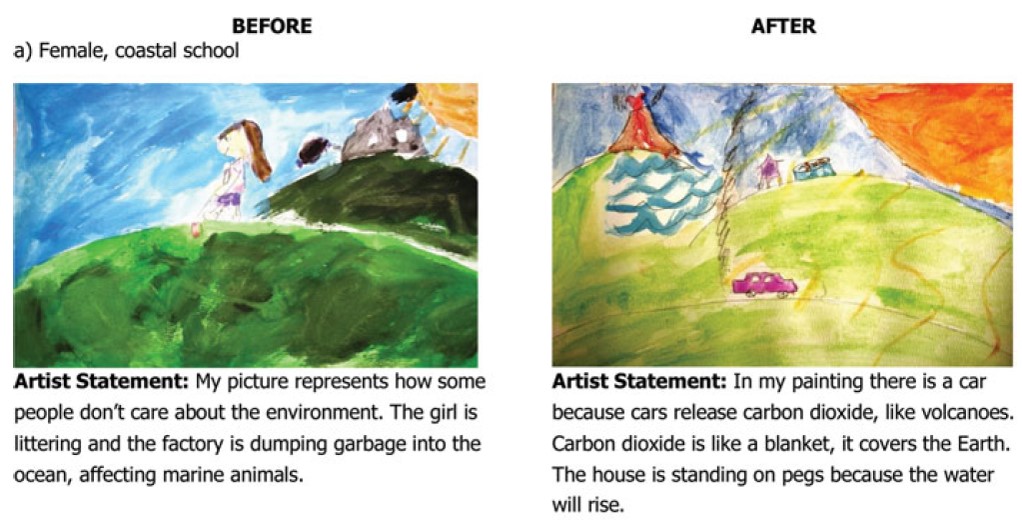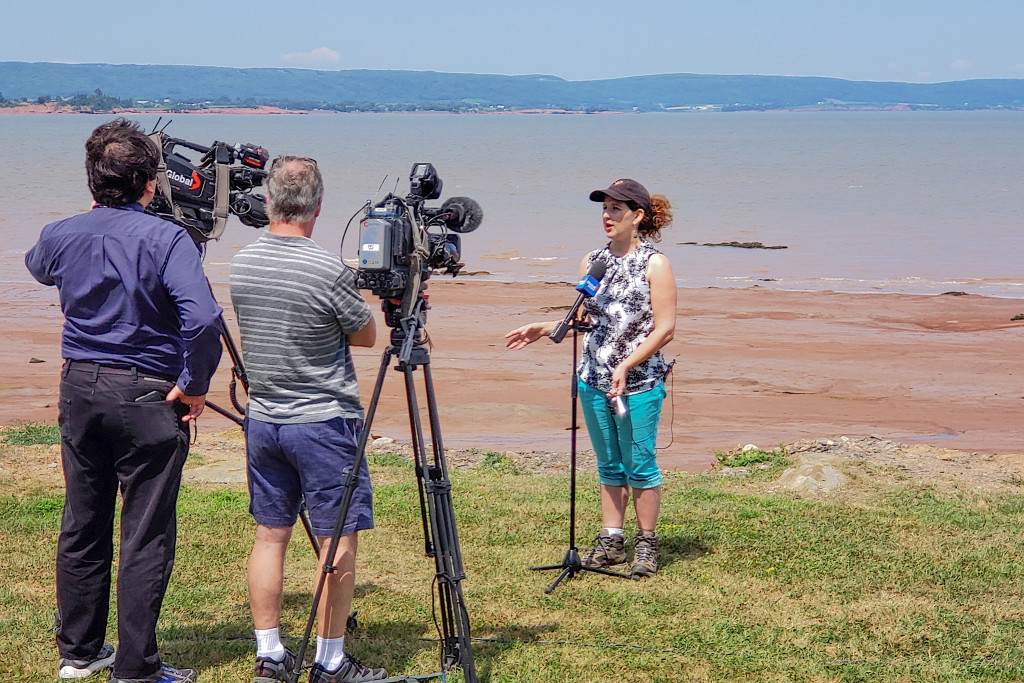
MES student Jaya Fahey talks about shorebirds at the WHSRN 30 year celebration today at Evangeline Beach (photo: Richard Stern)
Colleagues at Bird Studies Canada and Nature Conservancy Canada joined with other conservation groups today at Evangeline Beach at Grand Pre, Nova Scotia, to celebrate 30 years that the Minas Basin has been recognized by the Western Hemisphere Shorebird Reserve Network (WHSRN) as a globally significant bird habitat. MES student and BSC intern Jaya Fahey was interviewed for local media. The timing is significant: it is the leading edge of the time that the area hosts millions of shorebirds migrating south from the Arctic. These birds need to eat and gain weight and above all rest, because the next step is a big one: three days swim over the ocean non-stop to South America … and they can’t swim! The signs have already gone up at Avonport (left) to recruit beach users to help us set aside high-tide resting beaches while the birds are here. This is year three of Space to Roost, the second using resting beaches. We have some indication already that these resting beaches reduce human disturbance; this year should help us fully understand their effectiveness.
